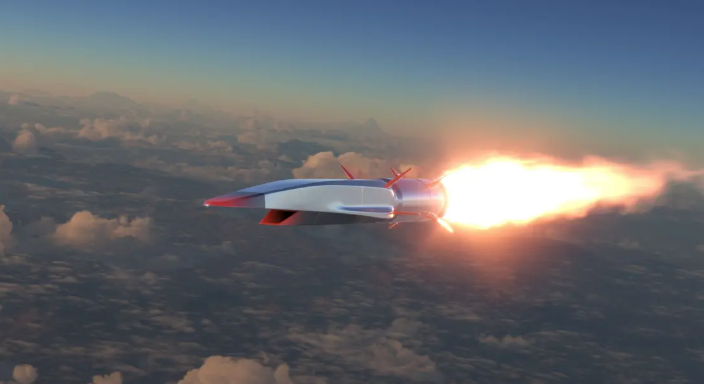More than 60 years ago, scientists in the United States imagined a powerful engine that could push aircraft to hypersonic speeds—up to 16 times the speed of sound.
Old American Dream, New Chinese Test
This dream involved something called an “oblique detonation engine” or ODE. Back then, the idea was too advanced, and many problems made it difficult to work. So, the project was mostly left behind.
Now, a Chinese government-supported research team has brought this hypersonic dream back to life. Two top Chinese institutions—the China Academy of Launch Vehicle Technology and Northwestern Polytechnical University—recently ran a test using this engine design. Their work was published in a Chinese scientific journal on May 6.
What made this test special is that they used regular aviation fuel, not experimental mixtures. The fuel was called RP-3, which is similar to what many military planes already use. During the test, they managed to create a powerful detonation wave, and they kept it going for over two seconds.
That’s a big step forward because an earlier Chinese test in 2023 only lasted 50 milliseconds. Some experts thought that earlier result didn’t count as a real breakthrough. But the new test lasted 40 times longer, giving clear proof of what was happening.
Pentagon Activates World’s Most Advanced Radar from Raytheon to Fight Hypersonic Threats
The test was set up to simulate a plane flying at hypersonic speed—Mach 8, which means eight times faster than sound—at a height of 30 kilometers in the sky. The engine didn’t need any moving parts to work, which is rare and useful for high-speed and hypersonic engines.
How the Engine Works
In this Chinese experiment, the engine used a smart design to control fuel and airflow. The RP-3 fuel was sprayed through four very tiny nozzles—each only 0.3 millimeters wide—right into a super-fast stream of air.
To make the fuel and air explode together, the hypersonic engine had a special wedge placed in the airflow. This wedge had tiny bumps on it, only 2 millimeters in size. As the fast-moving air hit these bumps, it got disturbed. That disturbance triggered a shockwave that caused the fuel to explode, or detonate.
Cameras showed what happened during the hypersonic detonation. Blue-white flames appeared first, showing the start of the burn, followed by yellow afterburn zones, which meant that the fuel was still burning as it mixed with air. This was a sign of a strong reaction taking place.
Hypersonic Gamble? Pakistan Says It Took Out India’s S-400—New Delhi Calls It Propaganda
Pressure sensors inside the hypersonic engine showed that the pressure jumped up to 272 kilopascals after the detonation started. That’s more than ten times higher than it was before the explosion. Scientists also ran computer models using a 10-step chemical reaction, and those results matched what they saw in real life. That showed the test wasn’t just a fluke—it was producing real thrust.
The detonation stayed steady for 2.2 seconds, which is a short time but long enough to study. The test proved that this hypersonic engine can work using liquid fuel, which makes it more practical for planes and missiles.
Big Steps, Some Issues
Even with this success, the engine isn’t perfect yet. Only part of the fuel fully mixed and burned in the chamber. In fact, just 39 percent of the chamber height had full fuel penetration. That means the engine wasn’t using all the fuel effectively. The airflow near the outer parts of the chamber was too weak, and the back end of the engine showed some signs of instability.
Not Stealth, But Strength: PLA Study Elevates B-52 Above F-22 and F-35 in U.S. Threat Matrix
To solve these issues, the researchers said they need better designs. For example, the mixing section of the engine might need to be longer, and the injectors that spray the fuel could be improved.
What makes this test more important is that it was backed by a major Chinese space agency. This group is also responsible for launching rockets and developing hypersonic glide vehicles. That means they are in a strong position to take this technology out of the lab and use it for real-world missions.
Although the idea of people flying in hypersonic jets is still far away, this engine might be used sooner in other ways. One example mentioned in Chinese military documents is in smart artillery shells. These are special kinds of bullets or projectiles that can be guided and travel very long distances. With a working ODE engine, these shells could reach targets that normal weapons can’t hit.
In short, China has taken an old idea from the Cold War and turned it into a working engine that can run on regular fuel. While there are still some flaws, this test marks a big step toward creating new high-speed technology that the world hasn’t seen before.

